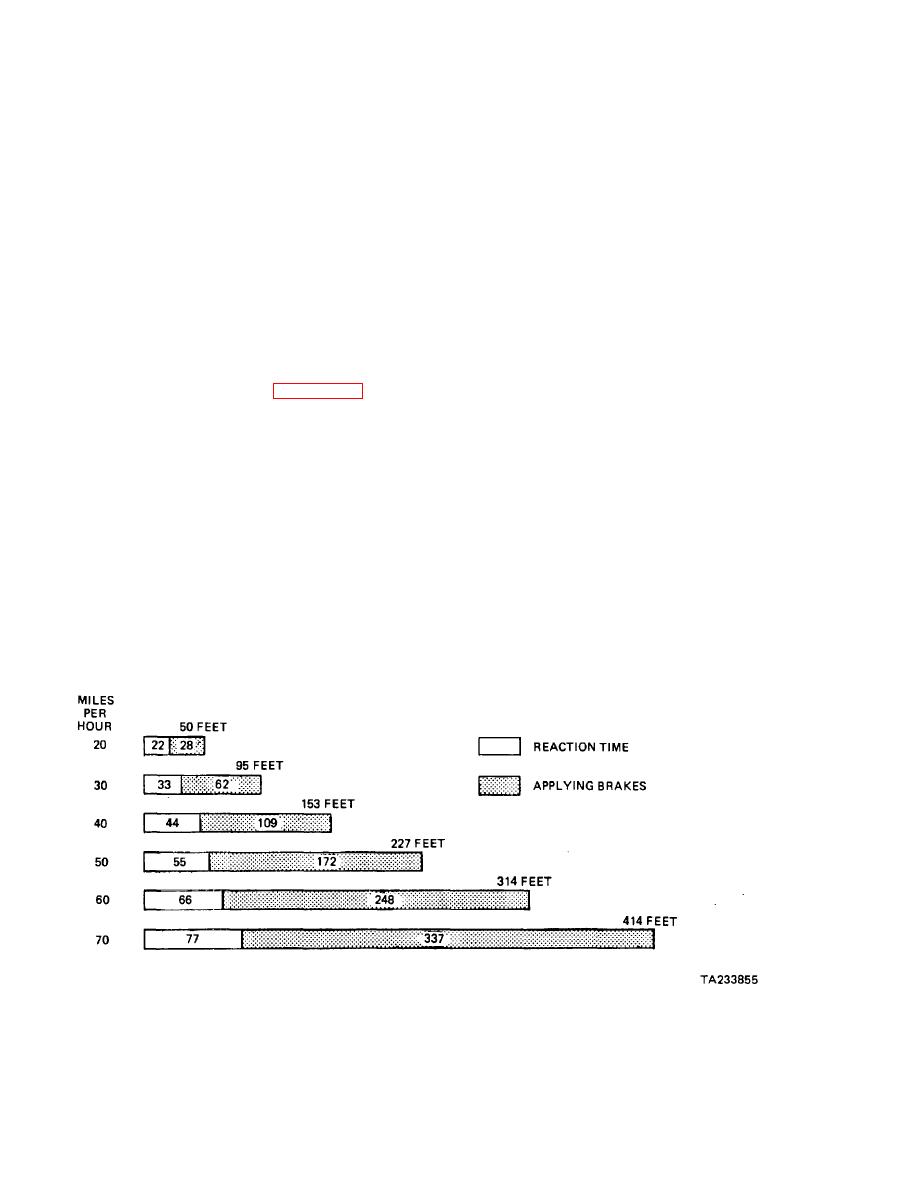
| Tweet |

Custom Search
|
|

|
||
 TM 9-8000
start, therefore the brakes harness eight times the power
c. Overall radius of wheel (distance from center of
developed by the engine. Thus, about 640 (8 x 80) hp
wheel to outer tread of tire).
has to be spent by the friction surfaces of the brakes of
an average passenger car to bring it to a stop from 80
d. Radius of brake drum or rotor (rotating member).
mph in 4.5 seconds.
e. Coefficient of friction between braking surfaces.
34-3. Vehicle Stopping Distance. Driver reaction time
f. Coefficient of friction between tire and road.
is the time frame between the instant the driver decides
that the brakes should be applied and the moment the
When the radius of the wheel or weight of the vehicle is
brake system is activated. During the time that the driver
increased, the pressure required on braking surfaces
is thinking of applying the brakes and moving his or her
also will be increased for a fixed amount of retardation.
foot to do so, the vehicle will move a certain distance,
These factors are independent of the design of the
depending on its speed. After the brakes are applied, the
braking system and generally are a fixed value.
vehicle will travel an additional distance before it is
However, limitations of these factors, particularly the
brought to a stop. Total stopping distance of a vehicle is
weight of the vehicle to be carried by the wheels, must
the total of the distance covered during the driver's
be considered when designing a braking system. If the
reaction time and the distance during which brakes are
radius of the brakedrum or coefficient of friction between
applied before the vehicle stops. Figure 34-3 illustrates
the braking surfaces is in- creased, less pressure will be
the total stopping distance required at various vehicle
required to obtain the same degree of retardation. The
speeds, assuming an average reaction time of 3/4
best results are obtained when these factors are
second and that good brakes are applied under most
correlated within the limits permitted by the design of the
favorable road conditions.
braking system. The coefficient of friction between tire
and road determines maximum retardation obtained by
34-4. Factors Affecting Retardation. The amount of
the application of brakes.
retardation obtained by the braking system of a vehicle is
affected by several factors. For wheel brakes used on
34-5. Maximum Retardation Point. When brakes are
motor vehicles, these factors are:
applied, the wheel either will roll or skid, depending on
relative values of coefficients of friction between braking
a. Pressure exerted on braking surfaces (rotating
surfaces and between tire and road. Heavy jamming of
and non-rotating members).
the
braking
b. Weight carried on wheel.
Figure 34-3. Total Vehicle Stopping Distance of an Average Vehicle.
34-2
|
||
 |
||